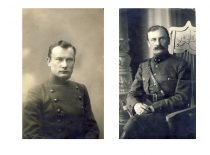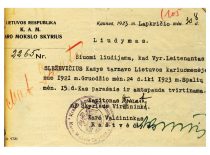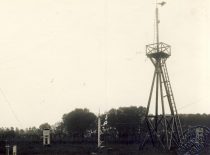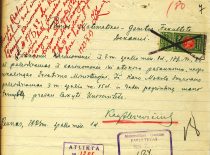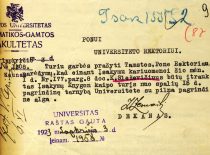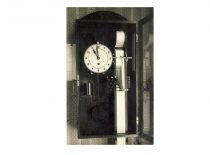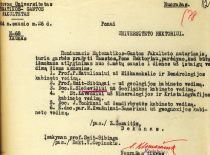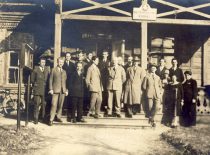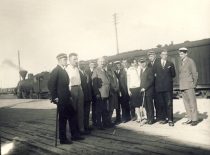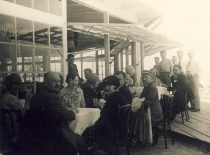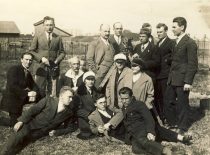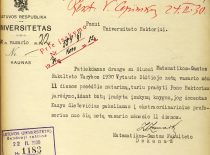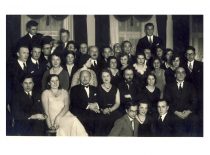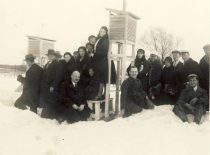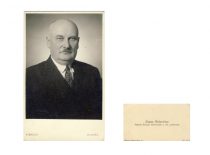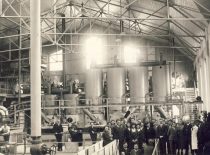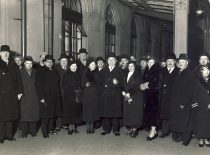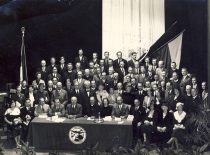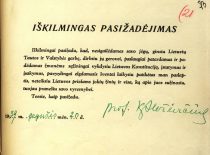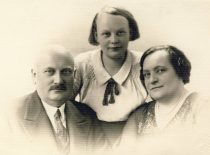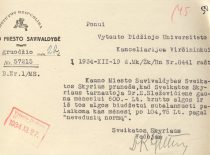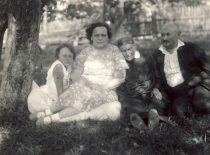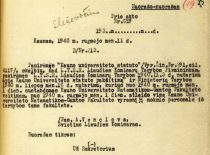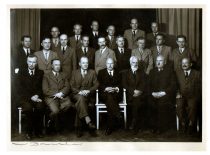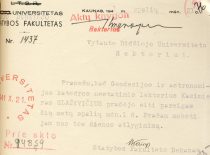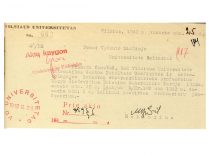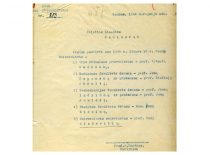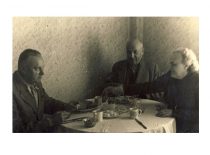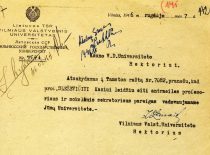Pioneer of Geophysics: 130th Anniversary of Prof. Kazys Sleževičius
This year marks the 130th anniversary of the birth of the pioneer of meteorology and geophysical sciences in Lithuania, the founder and long-time head of the departments in meteorology field in Kaunas and Vilnius universities and science populariser prof. Kazys Sleževičius. He was born into a noble family, soon lost his father and his mother Petronėlė Vizgirdaitė-Sleževičienė raised three sons with the help of the relatives. The eldest brother of Kazys, Mykolas Sleževičius, who chose the profession of the lawyer and later, became the Prime Minister of the Republic of Lithuania, had a big influence in the life of the youngest brother. After graduation from Riga Nikolai I Gymnasium, Kazys was admitted to the Novorossiysk University in Odessa from which his brother Mykolas graduated. After graduation from the Physics-Mathematics Department, he acquired the qualification of the physics-mathematics teacher and meteorologist. In 1917, he was mobilised to the army of the Tzar Russia; however, after the October Revolution, he returned to Odessa where he worked as a teacher and participated in the social activities of the Lithuanians of Odessa. One year later, he married a Ukrainian doctor Elena Dzhigurda.
In 1921, he returned to Lithuania with his wife but was mobilised to the Lithuanian army where he served as the head of the Military Science Division. While serving in the army, he worked as a teacher at “Saulė” Teachers Gymnasium and in 1922–1926, was the head of the Lithuanian Teachers Trade Union for Adults. In 1923, he was invited to give lectures at the University of Lithuania, as a specialist in geophysics and meteorology. There, he equipped the Geophysics Room, was the head of the Meteorology Commission and used Kaunas Weather Station for the practical works of students. In 1930, K. Sleževičius was awarded the title of the extraordinary professor and the Geophysics Room was reorganised into the Department of Geophysics and Meteorology and prof. K. Sleževičius became its head. He participated in the organisation of the Meteorology Office which was preparing the mathematics and physics programmes for secondary and post-secondary schools. Professor conducted two large unique geophysical research (gravimetry and magnetism) within the territory of Lithuania. The maps of gravitational and magnetic fields were prepared and published based on his works.
At the end of 1939, when Vilnius was recovered after an agreement with the Soviet Union, the Faculties of Humanities and Law of Vytautas Magnus University were relocated to Vilnius University; the relocation of the Mathematics-Nature Faculty was scheduled later; however, it was only relocated after the occupation of Lithuania. Prof. K. Sleževičius left to work at Vilnius University and in the autumn of 1941, when Germany occupied Lithuania, he also worked in a secondary position at Vytautas Magnus University. At the end of the war, his daughter Aldona moved to Germany and o K. Sleževičius and his wife remained in Lithuania which was repeatedly occupied by the Soviet Union. After the war, the professor worked at Vilnius and Vytautas Magnus Universities. In 1952, his house was nationalised which impaired his health – on 15 January 1953, K. Sleževičius suffered a stroke which resulted in his death.
Professor K. Sleževičius was a highly cultured, noble and kind-hearted man. His relationships with people were marked by a high level of tolerance and kindness to everyone, he was a frequent participant in student meetings and parties. He had a great sense of humour, knew many proverbs and sayings and used them often. Professor was very diligent, politely demanding and particularly punctual. He used to remind people that there were two professions that required particular punctuality – a railway officer and a meteorologist.
On the occasion of the anniversary of prof. K. Sleževičius, KTU Museum organised an exhibition displaying photographs and documents from KTU Museum and archive.


